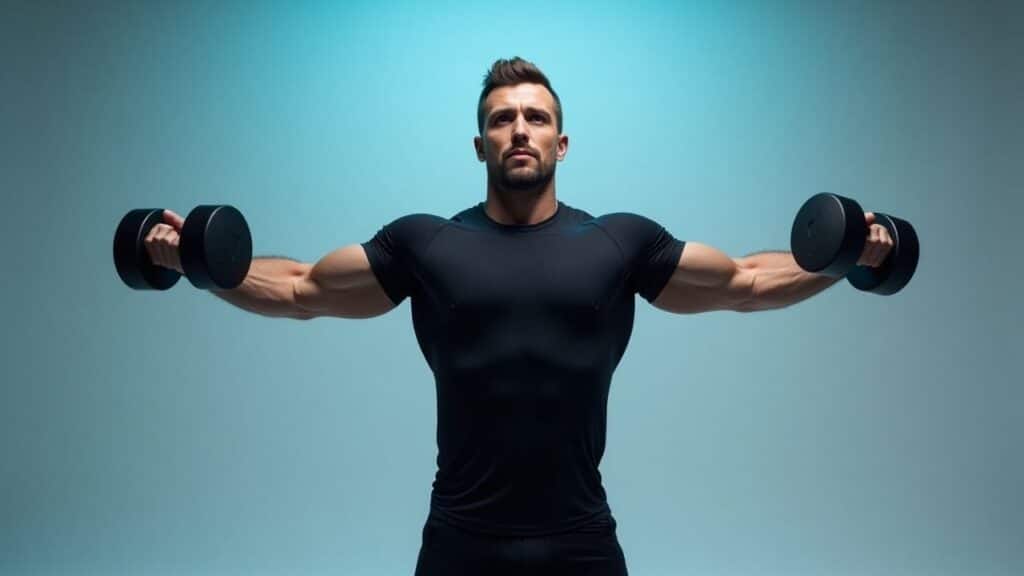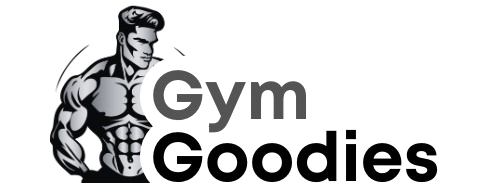Straight-Arm Lateral Raises: A Forgotten Gem for Shoulder Definition?

Ever spent hours in the gym doing lateral raises, only to feel your shoulders barely responding? You’re not alone. Many lifters chase shoulder definition with bent-arm raises and heavy presses, only to hit frustrating plateaus.
What if the missing key was a simple tweak, keeping your arms straight? Straight-arm lateral raises, an often-overlooked exercise, might be the secret to unlocking sculpted delts. Let’s dive into why this forgotten move deserves a spot in your routine, and how to do it right.
Why Your Shoulders Aren’t Growing: Here’s What’s Really Happening
Most people blame weak deltoids, but the real issue is poor muscle activation.
Traditional lateral raises (elbows bent) primarily target the medial deltoid, but they often let the traps and upper back take over. Straight-arm lateral raises force your entire shoulder complex, delts, rotator cuff, and stabilizing muscles, to work harder, leading to better definition.
Client Case Study: Olivia’s Shoulder Breakthrough
Sarah, a fitness enthusiast, struggled with “invisible” delts despite lifting heavy. When we switched to slow, controlled straight-arm raises, she finally felt her shoulders burn, not her traps. Within 8 weeks, her shoulders gained noticeable striations.
The Hidden Factor Everyone Overlooks: Scapular Control
“Keep a soft bend in your elbows” isn’t wrong, it’s just incomplete.
Traditional advice focuses on injury prevention, which makes sense. But going too bent turns a lateral raise into more of a shoulder shrug or even a front raise. With straight arms, the load sits farther from your shoulder joint, meaning more mechanical tension on the medial delt.
Imagine holding a bucket straight out vs. bent at the elbow. Which one gets heavy faster? That’s the principle at play here.
If you’re healthy and warmed up, straight-arm raises (with appropriate weight) can be both safe and wildly effective. Your shoulder blades dictate how well your delts fire.
A 2024 study in the Journal of Strength and Conditioning Research found that poor scapular stability reduces deltoid engagement by up to 27%. If your shoulder blades wing out or shrug during raises, you’re robbing your delts of growth.
Actionable Tip: The Wall Slide Test
- Stand with your back against a wall, arms extended straight out (like a “T”).
- Slowly slide arms up to a “Y” position, keeping elbows straight and shoulders down.
- If your shoulders hike up or lose contact with the wall, you need more scapular control work before loading straight-arm raises.
“Heavier Weights = Better Growth” Debunked
Heavy weights aren’t wrong, they’re just incomplete for shoulder definition.
Many lifters grab heavy dumbbells and swing through reps, thinking more weight = bigger shoulders. But the deltoids respond best to time under tension and precise control, not momentum.
Visual Cue: Think of Your Arms Like Levers
- Bent-arm raises shorten the lever (easier to cheat).
- Straight-arm raises lengthen the lever, forcing constant tension on the delts.
- Light-to-moderate weights with perfect form > heavy, sloppy reps.
Step-by-Step Fix: Sharper Shoulders in 6 Weeks
Follow this progression to master straight-arm lateral raises without shoulder strain.
Phase 1: Activation (Weeks 1–2)
- Band Pull-Aparts (2×15 reps): Warm up the rear delts and rotator cuff.
- Empty-Can Raises (3×12 reps): Strengthen supraspinatus (critical for straight-arm stability).
Phase 2: Technique Mastery (Weeks 3–4)
- Straight-Arm Raises (3×10 reps, 3-sec pause at top): Use 2.5–5 lb plates to emphasize control.
- Modification: If shoulders fatigue early, reduce range of motion (stop at 45° instead of 90°).
Phase 3: Progressive Overload (Weeks 5–6)
- Straight-Arm Cable Raises (4×8 reps): Cables provide constant tension.
- Add 1.25 lbs weekly: Small increments prevent form breakdown.
Final Takeaways
Straight-arm lateral raises enhance delt definition by maximizing muscle activation.
Scapular stability is key, test it with wall slides before loading.
Lighter weights + slower reps > heavy swings for long-term shoulder growth.
Try This Tomorrow:
- Replace one bent-arm lateral raise set with straight-arm raises (light weight, 3×12).
- Focus on keeping arms straight and shoulders down.
Within weeks, you’ll notice deeper shoulder cuts, and finally feel those stubborn delts working.
Disclaimer:
It should be remembered that the information available at gymgoodies.net is constantly evolving and is up-to-date and authentic information on fitness, exercises, and health.
I am a veteran bodybuilder, considering I have been active in the industry for quite some time. I ensure that the content shared reflects the lessons I have learned in my years of training and working or all the exposure I have had.
That said, it must be understood that the information available on this portal is obtained through communication channels and is primarily for education and information. Some factors and changes occur, and the issues discussed in this website address such things.
Every piece of advice regarding fitness or health should be taken with caution.
You might need the assistance of fitness professionals, nutritionists, or doctors regarding your workout routine, diet, or fitness activity. Their advice should be personalized PPC, the guide you integrate into your routine, taking into account your specifications and requirements regarding your health and fitness.
This is key, considering our concern is your health and safety. Make sure you only use the data on the site to empower expert advice and nothing more.



